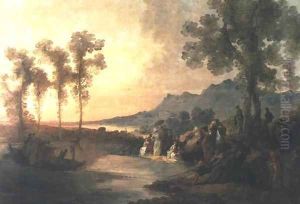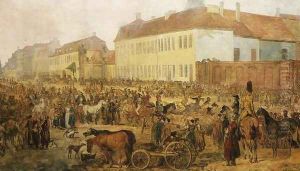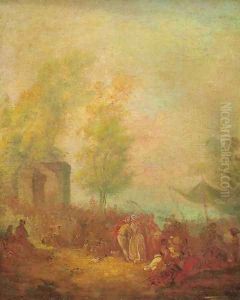Jan Piotr Norblin Paintings
Jan Piotr Norblin de la Gourdaine, more commonly known as Jean-Pierre Norblin, was a Polish-French painter, draughtsman, and engraver. Born on July 15, 1745, in Misy-sur-Yonne, France, Norblin started his artistic journey in his homeland but spent a significant portion of his career in Poland, where he became an influential figure in the Polish Enlightenment. He studied at the Royal Academy of Painting and Sculpture in Paris and honed his skills under the tutelage of notable artists such as Jean-Baptiste Greuze.
Norblin moved to Poland in 1774, where he was initially employed by the Czartoryski family, one of the leading aristocratic families in Poland. His work quickly gained recognition, and he became a sought-after artist among the Polish nobility. Norblin was known for his genre scenes, portraits, and historical paintings, as well as his etchings and drawings. His style was characterized by a keen observation of social and domestic life, often infused with a sense of humor and satire. Norblin's works provide a valuable insight into the customs, fashions, and daily life of the Polish-Lithuanian Commonwealth during the late 18th century.
During the Kościuszko Uprising (1794), Norblin created a series of sketches and etchings that depicted the events and heroes of the uprising, showcasing his support for the Polish cause. However, the political turmoil and subsequent partitions of Poland affected Norblin deeply. In 1804, after spending three decades in Poland, he decided to return to France. Back in his homeland, he continued to work as an artist but never regained the prominence he had enjoyed in Poland.
Norblin's later years were marked by financial difficulties and declining health. Despite these challenges, he continued to produce art, although his later works did not achieve the acclaim of his earlier Polish period. Jan Piotr Norblin died on February 23, 1830, in Paris, leaving behind a legacy that had a lasting impact on Polish art. His works are preserved in various museums and collections in Poland and France, testament to his cross-cultural appeal and the enduring quality of his artistic contributions.


